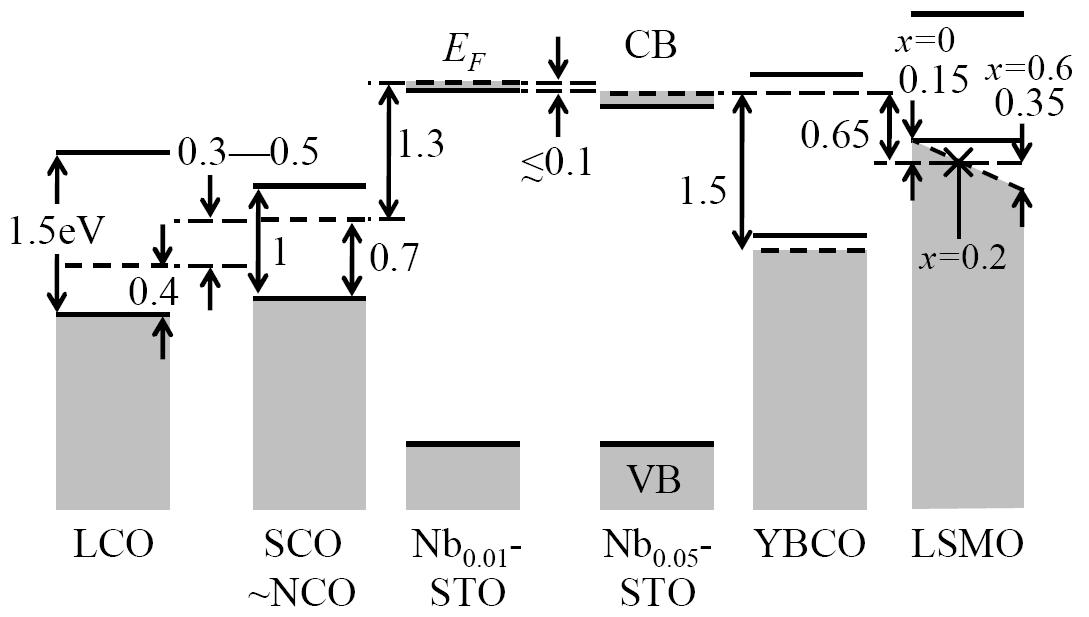
For heterostructures between a Mott insulator and a band insulator, emergence of electronic phases, which are different from the bulk, was proposed by S. Okamoto (in collaboration with Prof. Millis at Columbia University). Recently, we constructed band diagram for perovskite-type transition-metal oxides and predicted novel electron-doped superconductivity at cuprates/manganites interfaces [S. Yunoki, A. Moreo, E. Dagotto, S. Okamoto, S. S. Kancharla, A. Fujimori, Phys. Rev. B 76, 064532 (2007)].

|
Schematic band diagrams of LCO: La2CuO4 is a parent compound of hole-doped superconductors, SCO (NCO): Sm2CuO4 (Nd2CuO4) is a parent compound of electron-doped superconductors, Nb0:01-STO: 0.01 wt% Nb-doped SrTiO3, Nb0:05-STO: 0.05wt% Nb-doped SrTiO3, YBCO: YBa2Cu3Oy, and LSMO corresponds to La1-xSrxMnO3, i.e. a colossal magnetoresistance manganite. These results are based on diffusion voltage measurements and photoemission spectroscopy. The tops of valence bands (VB) and bottoms of conduction bands (CB) are indicated by solid lines, while chemical potentials are indicated by dashed lines. [for detail, see S. Yunoki et al., Phys. Rev. B 76, 064532 (2007)] |